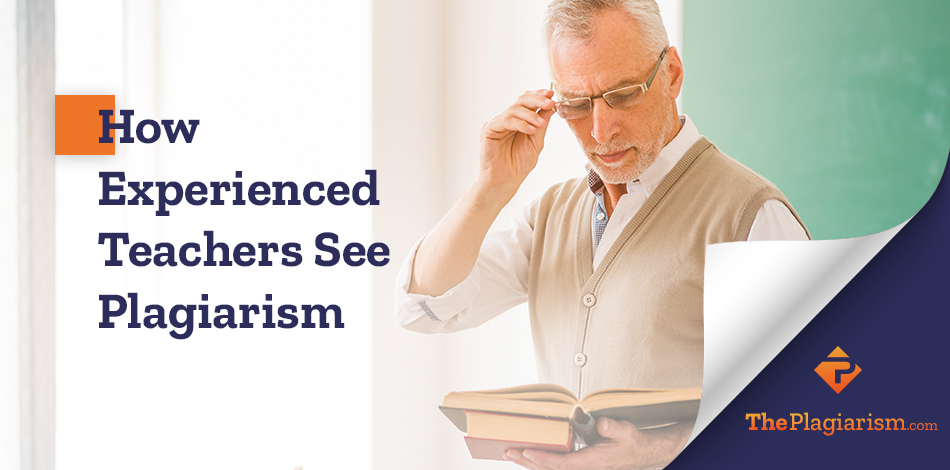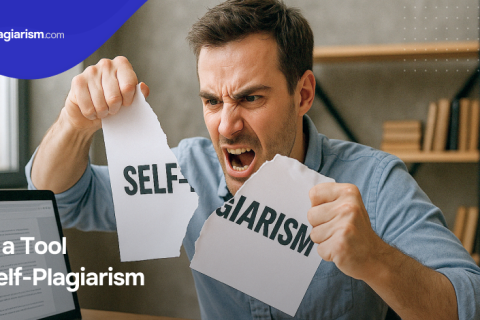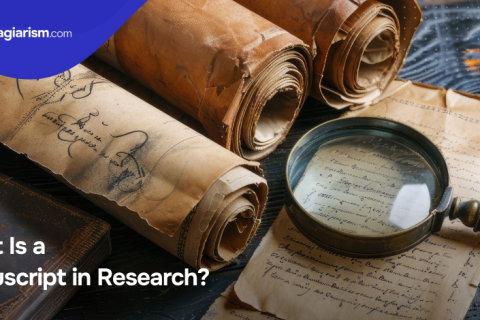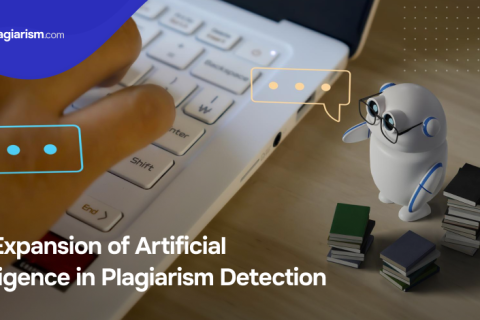How Do Teachers Check for Plagiarism?
01 Sep 2020

Teachers are Masters of Academic Clairvoyance
Have you ever pondered on the fact why students truly become intimidated in front of some teachers? My guess is that they fear their mentors’ clairvoyance, which is often reflected in the ability to predict students’ ebbs and flows. Sometimes, it seems your second-sighted educator sees through you and you cannot hide anything. Have you ever felt that the only glance of your teacher at you makes you reveal all your secrets and possible cheating maneuvers? The majority will undoubtedly answer “Yes!”
So how do teachers detect plagiarism? How do they instantly know you plagiarized and do they? The following steps will lift the curtain on several plagiarism identification secrets of experienced professors.
Plagiarism-Discerning Methods Some Teachers Revealed
There might be an impression that professors check for plagiarism quite easily, as their experience greatly helps them. However, it is not effective to rely only on the previous experience – they encounter so many different students each year, and sharp-witted youngsters also find their ways to outsmart their teachers. Even if a scholar is a genius, he or she does not have a robotic mind to remember all their former students’ works. Pedantic teachers often jump into their own bait, giving numerous writing assignments during one semester. It is even strange that they seemingly “forget” that freshman, sophomore, junior, and senior students communicate with one another. Apparently, they share their knowledge regarding the subject, the preferences and weak spots of the lecturer, as well as certain tricks they used to pass exams or dedicate less time to boring essays. There is a category of students that can be called “decent paraphrasers”, as those eloquent minds are able to paraphrase any information taken from the Internet so brilliantly, so you will perceive it as a unique thought. It takes some effort to notice a strange contextual similarity when you know the subject from A to Z. You have to be an extremely scrupulous teacher to find plagiarism within the context, even when an advanced plagiarism checker showed 0%! Nonetheless, you should not hurry to make conclusions that good plagiarism detectors are useless. The number of students who perfectly paraphrase is relatively small. Some of the students are simply irresponsible and treat their grades not seriously – so the percentage of plagiarism in their works is surprisingly high. Some undergrads are “spellbound” when it comes to proper citing or referring to their sources – they cannot learn the specifics of formatting and their citations turn into plagiarism all the time! An advanced similarity detector does its job well and it will always remain the most reliable and quick method to check for plagiarism. Plagiarism detection methods using the most suitable tools and years of knowledge are demonstrated by the answers of random professors who participated in our survey.
How Teachers See Your Plagiarism. Real Thoughts Along with Real Methods.
-
“Sometimes, I think how professors tracked plagiarism some centuries ago. Perhaps, assigned compositions were more individual and being a student was a privilege, so plagiarizing was a major offence – usually, they did not want to become academic perpetrators, they truly feared to be excluded. This may sound as a paradox, but plagiarism was less common in the past, and the world wide web, that incessant free access to any information, gave rise to plagiarists.” Rosemary K., Australia
-
“For me, plagiarism detection is easier nowadays. Besides using a plagiarism checker, I put the text with dubious originality into a search engine and it often shows me my instincts were right. I told about my methods to my students, and they were pretty intimidated by it. They started plagiarizing less.” Ibrahim S., Bosnia and Herzegovina
-
“I hate when my students cut and paste from an abundance of sources, and then their works totally lack coherence. I cannot understand how they do not bother even to paraphrase their findings, and their education is not free of charge. Fortunately, students also fear that they have to pay extra 400 euros to pass a subject anew. Besides, using ThePlagiarism checker facilitates professors’ work a lot.” Andrjey H., Romania
-
“What is my plagiarism detection method? I have an eye of an eagle; I just see it! Not joking, I quickly learn the styles of writing my students have. Even if the work is perfect, but the style is completely different – I know that the essay was not written by this student. If I discern a fraud, I ask a student about it directly – they cannot keep on lying to my face. However, I must say, this approach may be time-consuming, so you should always have a trustworthy plagiarism checker at hand.” Hanna N., Malta
-
“There are instances when a simple Google search does not help. Our university uses ThePlagiarism scanner to see different levels of plagiarism. We have many students and they compose research papers on a regular basis. It is impossible to check every essay manually, so the plagiarism checker has become our life-saver.” Vidmante L., Lithuania
-
“We have a contract with Turnitin and other plagiarism detectors and our students know about it. They upload their assignments into the Moodle and then their papers are being checked. To my mind, the only presence of plagiarism checkers encourages students not to plagiarize. They do not provide the 100% authentic content, but, at least, they try to minimize similarities.” Jules M., The United States
-
“When I was a high school World Literature teacher, identifying plagiarism was as easy as shelling peas. I instantly detected the manner of writing of each student, knew the flow of their thoughts. It was almost impossible to trick me back then. When I became a college teacher, the assignments had to be more complicated, proper references were required, so students could not avoid working with a variety of sources and, obviously, sources had to be cited. Then I started working as an editor of publicist articles, and owing to my prior experience at schools and colleges, I instantly noticed those special authorly styles or their imitations. When you edit lots of works daily, you start to distinguish the writers’ “voices”. Even if you express your ideas in writing, you acquire your special manner and despite experimenting with styles and genres, a virtuous editor’s eye will know that the work is yours or not yours. In case of my students, they were scared of my specific phrase: “It does not sound like You.” They knew very well that this sentence was synonymous to “You plagiarized”. Roberta C., The United States
-
“I like how ThePlagiarism.com checks works for plagiarism. This is my primary method that helps me to find out whether a student plagiarized or wrote an original essay. Anyway, I can see plagiarism instantly on my own when the information was taken from JSTOR, CliffNotes, SparkNotes, WikiSummaries, LitCharts, and so on. Such websites have their exclusive tone that, for some awkward reason, cannot be imitated by students, especially international ones.” Stephanie C., The United States
-
“We use plagiarism checkers that are able to search for coincidences throughout Google and Bing, as well as our own Storage, which consists of accumulated assignments written by former students. The most effective method is to give a second chance. I mean our students have several attempts before they submit the final version of the essay. We can track the progress of the plagiarism prevention and see how many students cope with it assiduously and how many students neglect the importance of the essay writing process itself.” Michael D., Canada
-
“I doubt that there are some modern educators who do not use plagiarism scanning tools. However, the most significant thing is to choose an authenticity checker that identifies layers of plagiarism, from minor to serious coincidences. I cannot imagine grading my students’ assignments without passing them through a plagiarism software.” Ahmed Z., The United Arab Emirates
Steps Undertaken by A Witty Teacher to Check a Student’s Work for Plagiarism
I. The implementation of the advanced plagiarism detector, such as ThePlagiarism and PlagiarismSearch – cost-effective alternatives to Turnitin.
II. Psychological steps.
- Reading an essay aloud in front of a student to see whether he is not worried too much to disclose that something is wrong. Indeed, a professional teacher often performs a role of psychological stress evaluator – sometimes more effective than a machine.
- Asking a student to retell a random paragraph from his paper. The author of the composition will be confident enough to do it.
- Offering to scan a paper through a plagiarism detector in the presence of other students.
III. Scanning the suspicious paragraphs through the ordinary Google Search. Nonetheless, this step is not very effective and time-consuming, as a well-programmed plagiarism software will do the job much faster, instantly highlighting the plagiarized excerpts and showing links of the websites where it was taken from.
IV. Using university databases to scan against research papers written by students who have already graduated. This method also reveals self-plagiarism. For instance, a new topic investigated by a junior student might coincide with the same topic research of his sophomore year. Frequently, undergraduates borrow information from their previous assignments.
What Plagiarism Checker Do Professors Use?
Plagiarism in college remains a common phenomenon and this academic misdeed does not seem to fade away. Every year, educational establishments all over the world welcome new apprentices unaware of plagiarism consequences. In order to fight against such a scholarly disparagement, professors resort to miscellaneous roundabout methods but finding the most effective plagiarism detectors is always the most favorable way out. If you are searching for trustworthy smart plagiarism checking tools, you should remember the following names: ThePlagiarism, UniCheck, iThenticate, Plagramme, PlagiarismSearch, Quetext, and Scribbr.
When you write an original text, even the strictest professor will reward you with a grateful smile and a decent grade. All in all, your main motivation should lie in your ambition to obtain a high-quality education. If you can write well, then you can think well, and thinking minds will never be unemployed.






